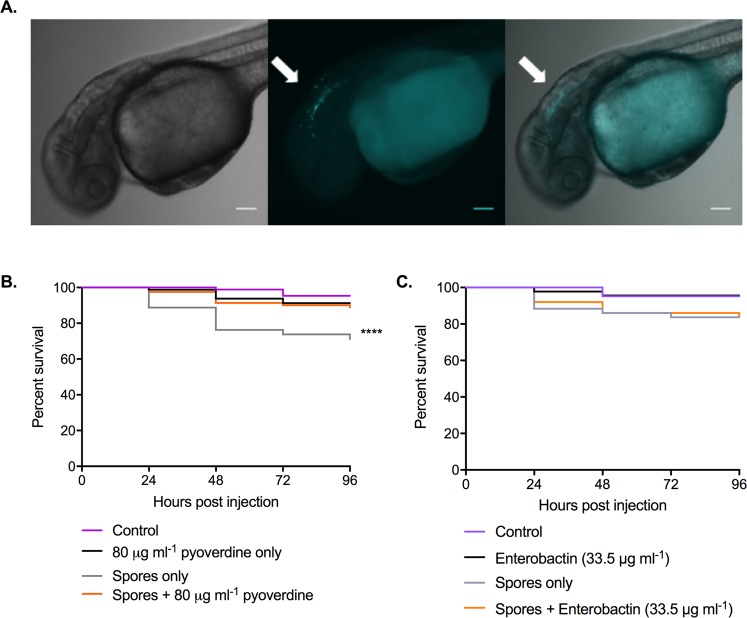Figure 7.
The bacterial siderophore, pyoverdine, reduces R. microsporus virulence in a zebrafish model of infection. To determine the impact of pyoverdine on fungal virulence within a host, zebrafish larvae were injected in the hindbrain with 50 spores +/−80 μg ml−1 pyoverdine. (A) Representative images of zebrafish larvae at 0 hpi. White arrows indicate R. microsporus spores (Calcofluor White stain, cyan pseudo-coloured) located within hindbrain compartment. Scale bars depict 100 μm. (B) Survival of larvae was quantified over time. Shown are data pooled from four separate experiments with a total of 87, 80, 80, and 81 fish for control, pyoverdine only, spores only, and spores + pyoverdine, respectively. Data analysed with Mantel-Cox log-rank test. (C) Survival of larvae was quantified over time. Data shown is pooled from two independent experiments with a total of 42, 44, 46, 43, and 50 fish for control, enterobactin only, spores only, and spores + enterobactin, respectively. Data analysed with Mantel-Cox log-rank test.

